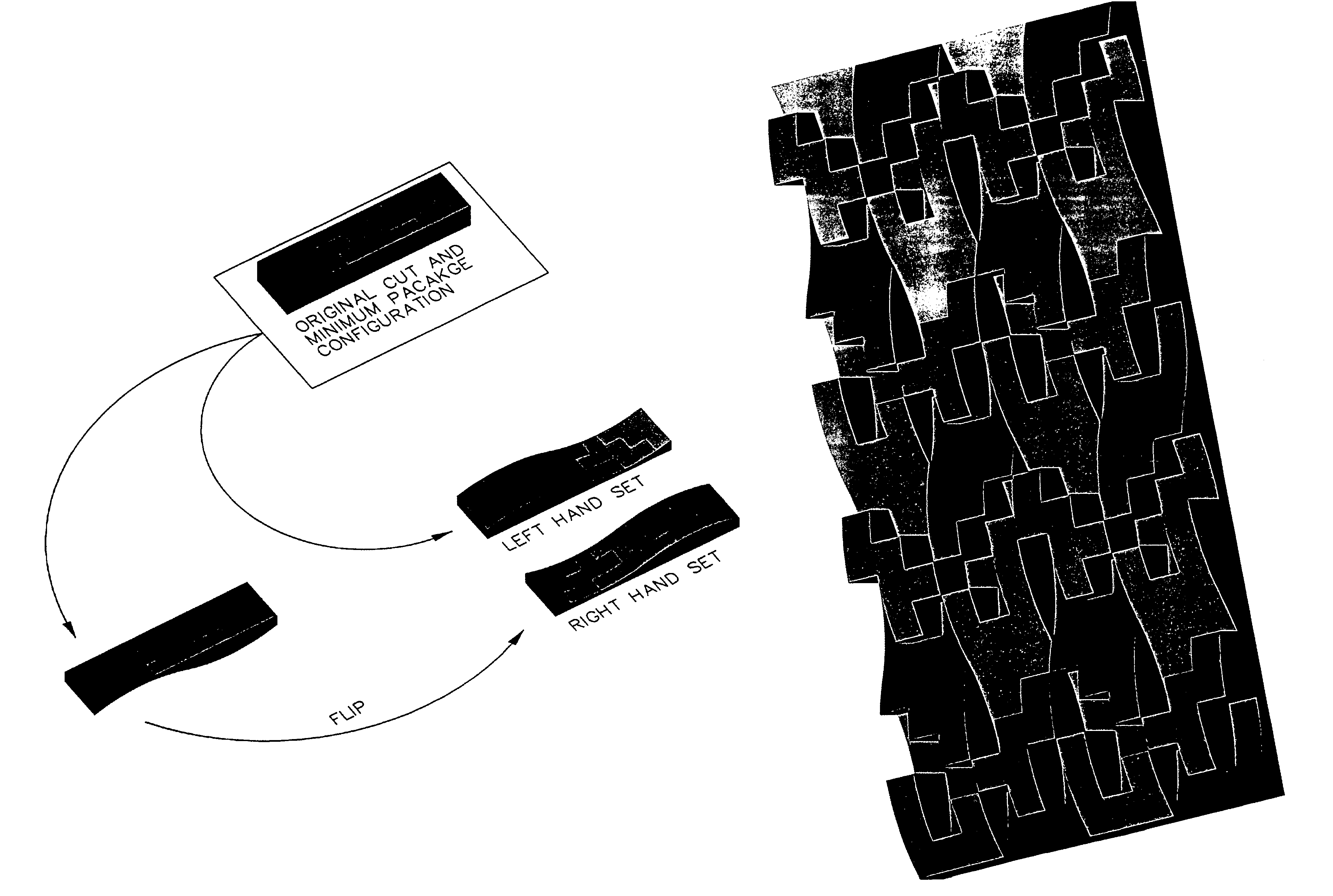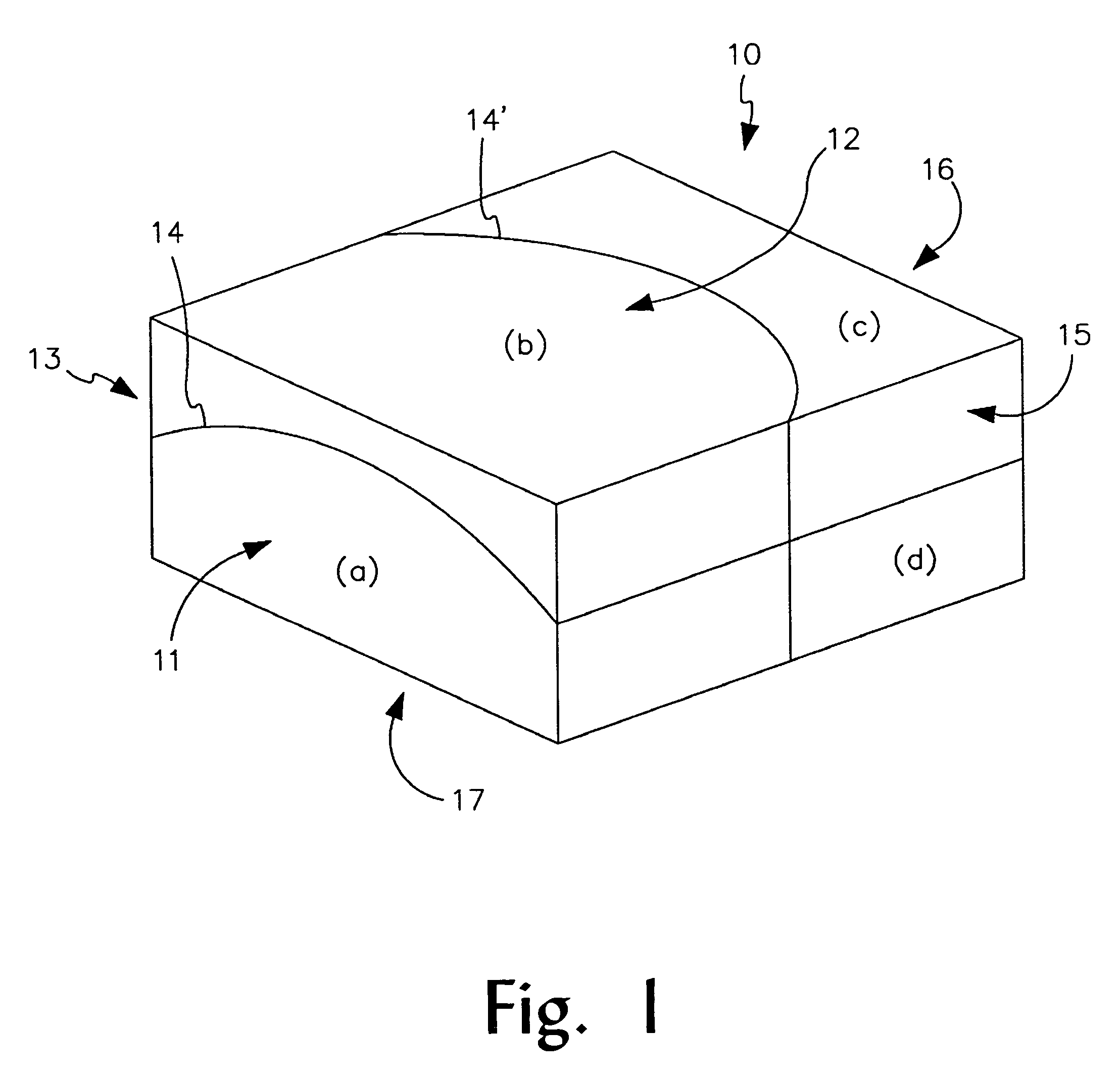Three-dimensional tessellated acoustic components
a technology of tessellated acoustic components and tessellated foam, which is applied in the direction of building components, floor coverings, ceilings, etc., can solve the problems of limited aesthetic appeal of foam products used as acoustical surface treatment, limited low-frequency performance, and limited surface shapes of commercially available foam products, so as to reduce waste of materials, reduce production costs, and increase packing density
- Summary
- Abstract
- Description
- Claims
- Application Information
AI Technical Summary
Benefits of technology
Problems solved by technology
Method used
Image
Examples
Embodiment Construction
[0040]When designing an acoustically critical space, such as a recording studio, various building materials are used to help address typical acoustic problems. One of these materials is cellular foam, which is used to absorb sound within a space. These foams can be described as a mass of bubbles composed of plastic and gas. The walls of the bubbles are distributed with plastic. These bubbles are referred to as cells, while the walls are known as windows.
[0041]Typically, there are two types of cellular foam: open cell and closed cell. A foam that is made up of open windows leaving many cells connected, so gas such as air may pass from one cell to another, is known as “open cell” foam. “Closed cell” foam does not conduct air from cell to cell. The air pockets in an open cell foam more readily absorb sound than closed cell foam, in general.
[0042]Our general embodiment of the present invention includes production methods and the products comprising tessellated three-dimensional (“3D”) a...
PUM
 Login to View More
Login to View More Abstract
Description
Claims
Application Information
 Login to View More
Login to View More - R&D
- Intellectual Property
- Life Sciences
- Materials
- Tech Scout
- Unparalleled Data Quality
- Higher Quality Content
- 60% Fewer Hallucinations
Browse by: Latest US Patents, China's latest patents, Technical Efficacy Thesaurus, Application Domain, Technology Topic, Popular Technical Reports.
© 2025 PatSnap. All rights reserved.Legal|Privacy policy|Modern Slavery Act Transparency Statement|Sitemap|About US| Contact US: help@patsnap.com



